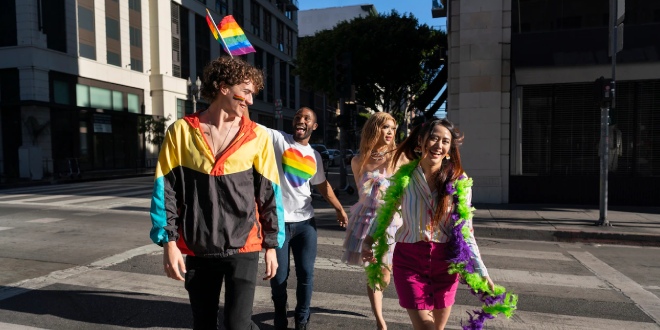Travel is not just about exploring new destinations; it can also be a powerful tool for discovering and celebrating the rich history of the LGBTQ+ community. From significant landmarks and museums to vibrant neighborhoods and historical events, LGBTQ+ history is waiting to be explored around the world. In this article, we will delve into the importance of LGBTQ+ history and how travel can provide unique opportunities to learn, connect, and honor the struggles and triumphs of the community.
Unearthing Hidden Stories
Traveling allows us to uncover hidden stories and experiences that are often omitted from mainstream narratives. LGBTQ+ history is filled with tales of resilience, activism, and cultural contributions that deserve recognition. By visiting destinations such as Stonewall Inn in New York City, the birthplace of the modern LGBTQ+ rights movement, or the Schwules Museum in Berlin, which showcases the LGBTQ+ experience in Germany, travelers can gain a deeper understanding of the challenges faced and progress achieved by the community.
Pride Parades and LGBTQ+ Festivals
Pride parades and LGBTQ+ festivals are vibrant celebrations of identity and freedom. They not only provide a platform for visibility and acceptance but also serve as reminders of the long-fought battles for equality. Attending Pride events around the world, such as São Paulo Pride in Brazil or Sydney Gay and Lesbian Mardi Gras in Australia, allows travelers to immerse themselves in the energy and unity of the LGBTQ+ community while commemorating its history.
Historical Landmarks and Monuments
Numerous landmarks and monuments carry historical significance for the LGBTQ+ community. For instance, the Oscar Wilde Memorial Sculpture in Dublin pays tribute to the renowned gay writer, while the Pink Triangle Memorial Park in San Francisco memorializes the victims of the AIDS epidemic. By visiting these landmarks, travelers can pay their respects, learn about the struggles faced by the community, and gain a sense of the progress made towards equality.
LGBTQ+-Friendly Neighborhoods
Exploring LGBTQ+-friendly neighborhoods is a fantastic way to delve into LGBTQ+ history and culture. Neighborhoods like the Castro District in San Francisco, Soho in London, and Le Marais in Paris have played pivotal roles in LGBTQ+ activism and community-building. Travelers can walk the streets, visit LGBTQ+-owned businesses, and engage with the local community to gain insights into the challenges and triumphs experienced by LGBTQ+ individuals in these areas.
Museums and Archives
Museums and archives dedicated to LGBTQ+ history offer a treasure trove of information and artifacts. The Leslie-Lohman Museum of Art in New York City, for example, showcases LGBTQ+ art, while the ONE National Gay & Lesbian Archives in Los Angeles holds an extensive collection of historical documents. Visiting these institutions allows travelers to delve into the artistic, cultural, and political contributions of the LGBTQ+ community throughout history.
Traveling provides a unique opportunity to discover and learn about LGBTQ+ history around the world. By visiting historical landmarks, attending Pride parades and festivals, exploring LGBTQ+-friendly neighborhoods, and engaging with museums and archives, travelers can deepen their understanding of the struggles, triumphs, and contributions of the LGBTQ+ community. Embracing LGBTQ+ history through travel not only fosters a sense of pride and connection but also promotes a more inclusive and equitable future for all.
Disclaimer: This article contains personal opinions and perspectives of the author.
 Lesbian, Gay, Bisexual, Transgender & Intersex News Lesbian News, Gay News, Bisexual News, Transgender News, Intersex News, LGBTI News
Lesbian, Gay, Bisexual, Transgender & Intersex News Lesbian News, Gay News, Bisexual News, Transgender News, Intersex News, LGBTI News




